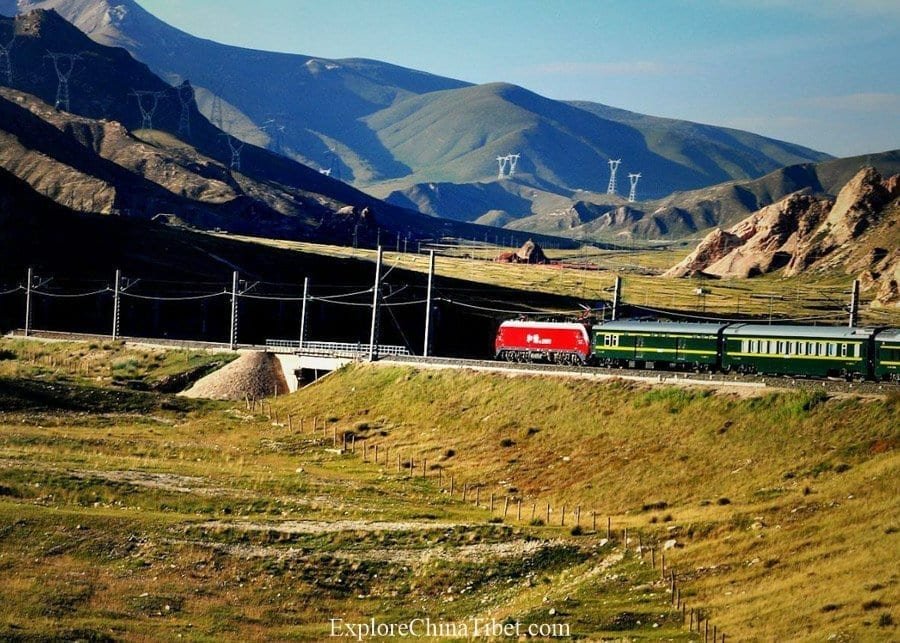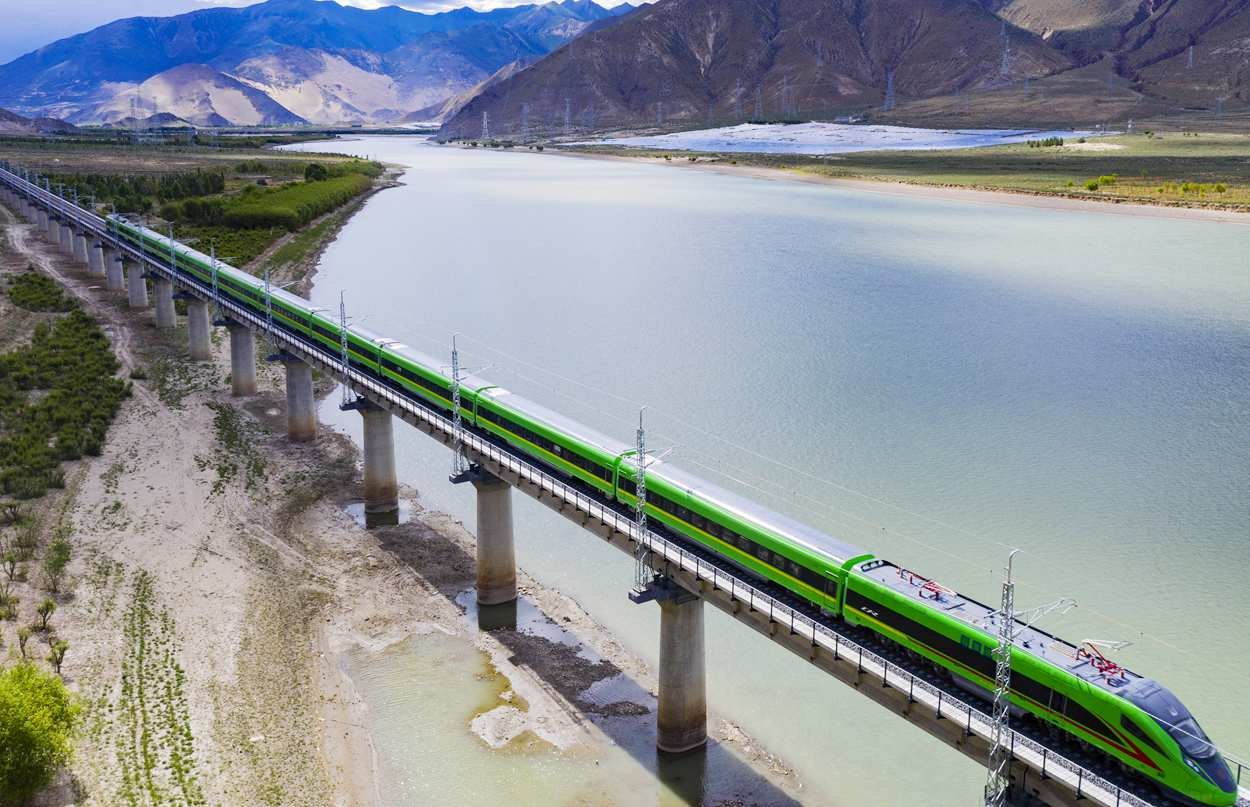Introduction to the Xi’an to Lhasa Train Journey
The Xi’an to Lhasa train route is one of the most remarkable rail journeys in the world, embodying both historical significance and breathtaking scenery. Spanning approximately 2,864 kilometers, this route connects two culturally rich cities: Xi’an, known as the starting point of the ancient Silk Road, and Lhasa, the spiritual heart of Tibet. This train journey not only facilitates travel between these iconic locations but also offers a unique opportunity to witness an array of stunning landscapes and diverse terrains.
Travelers embarking on this extraordinary journey can expect a duration of about 30 to 31 hours, providing ample time to soak in the magnificent vistas that unfold outside the train windows. The route traverses numerous geographical features, including fertile plains, rugged mountains, and high-altitude deserts. As the train steadily climbs, passengers are greeted by panoramic views of the Tibetan Plateau, characterized by its vast expanses and stark beauty.
Delving into the historical significance of the Xi’an to Lhasa train route reveals its role in enhancing connectivity throughout China and beyond. Officially inaugurated in 2006, the line has effectively linked Tibet to the mainland, thus facilitating not just tourism but also cultural and economic exchanges. It stands as a testament to modern engineering, as the train is designed to operate at high altitudes, ensuring passenger comfort in the challenging Tibetan environment.
This train journey is more than a mere mode of transportation; it is a visual narrative that unfolds through time. Each passing landscape tells stories of ancient traditions and the unique cultures of the regions crossed. Therefore, for those seeking an adventure steeped in history while appreciating nature’s grandeur, the Xi’an to Lhasa train journey is an experience not to be missed.
Train Options and Schedule
The journey from Xi’an to Lhasa is marked by several train options, providing travelers with the opportunity to explore this remarkable route through the Tibetan Plateau. Currently, the primary trains operating on this route are the Z265 and Z165. Both trains offer a scenic and comfortable travel experience, catering to the needs of both foreign tourists and domestic travelers.
The Z265 train departs from Xi’an at 21:00 and arrives in Lhasa the following day at approximately 10:02, making for a total travel time of around 37 hours. This overnight journey allows passengers to enjoy breathtaking landscapes as they traverse vast stretches of rugged terrain. The train comprises several classes of accommodation, including soft sleeper, hard sleeper, and hard seat options, ensuring a level of comfort suited to all budgets.
On the other hand, the Z165 train provides a slightly different schedule. It departs from Xi’an at 19:45, arriving in Lhasa at around 08:37 after approximately 36 hours and 52 minutes of travel. This option also offers a variety of seating arrangements, making it another popular choice for those seeking an adventure through this historic pathway.Scenic Route Highlights
The train journey from Xi’an to Lhasa unfolds a tapestry of breathtaking landscapes and diverse geological features, marking it as one of the most scenic rail routes in the world. As the train embarks on its journey, it gradually ascends through various cities, transitioning from the historic heart of Xi’an to the breathtaking heights of the Tibetan Plateau.
One of the early highlights of this journey is the striking scenery of the Loess Plateau, characterized by its unique yellow earth formations and rolling hills. As the train continues, it traverses through the charming landscapes of Shaanxi Province, where passengers can gaze upon verdant fields and ancient architecture that reflects the rich cultural history of the region.
As elevation increases, travelers begin to witness remarkable views of the Qinling Mountains. Their majestic peaks provide a stunning backdrop, captivating all who are aboard. This segment of the journey also features picturesque rivers and lush valleys, offering a glimpse into the natural beauty that defines this region.
Entering the Qinghai Province marks another significant transition. Here, the train passes by expansive grasslands and pristine lakes, such as the famous Qinghai Lake—China’s largest saltwater lake—renowned for its captivating blue waters and the surrounding mountains that create a stunning contrast. The sight of the vast, lively grasslands is particularly impressive, as herds of Tibetan nomads and their yaks can often be seen grazing peacefully.
As the train approaches the Tibetan Plateau, the landscape transforms dramatically. The high-altitude barren beauty, punctuated by formidable mountain ranges and deep gorges, is a reminder of the ruggedness that characterizes Tibet. Each curve and bend of the tracks reveals new vistas, allowing passengers to absorb the awe-inspiring natural scenery. This unique blend of cultural richness and scenic splendor makes the train route from Xi’an to Lhasa a journey to remember.
Ticket Classes, Prices, and Important Travel Notes
When planning a journey on the Xi’an to Lhasa train route, travelers can choose from several ticket classes, each designed to cater to different budgets and comfort levels. The three primary types of seats available are soft sleeper, hard sleeper, and hard seat. The soft sleeper is the most comfortable option, offering private compartments for four passengers with bedding and pillows provided. This class typically ranges from approximately 900 to 1,200 Chinese Yuan (CNY) depending on the season and availability.
The hard sleeper, while less luxurious, still provides a reasonable level of comfort with open compartments accommodating six passengers. Bedding is also provided, and prices for a hard sleeper ticket generally fall between 400 to 700 CNY. The least expensive option is the hard seat class, which is suitable for those on a tight budget. However, travelers should be aware that this class lacks the amenities of the sleepers and does not offer sleeping arrangements. Prices for hard seats usually start around 200 CNY.
In addition to understanding ticket prices, prospective passengers should be aware of vital travel notes before their journey. A Tibet travel permit is mandatory for all travelers intending to visit Lhasa, and the train ticket alone does not authorize entry into Tibet. Moreover, it is important to note that single tickets cannot be used for stopovers; passengers must complete the journey from Xi’an to Lhasa without interruptions. Considering the high altitude of the journey, accommodations for altitude acclimatization are provided on the train, including oxygen supplies. This thoughtful provision ensures that travelers can adjust to the changing altitudes comfortably as they embark on this scenic adventure.

